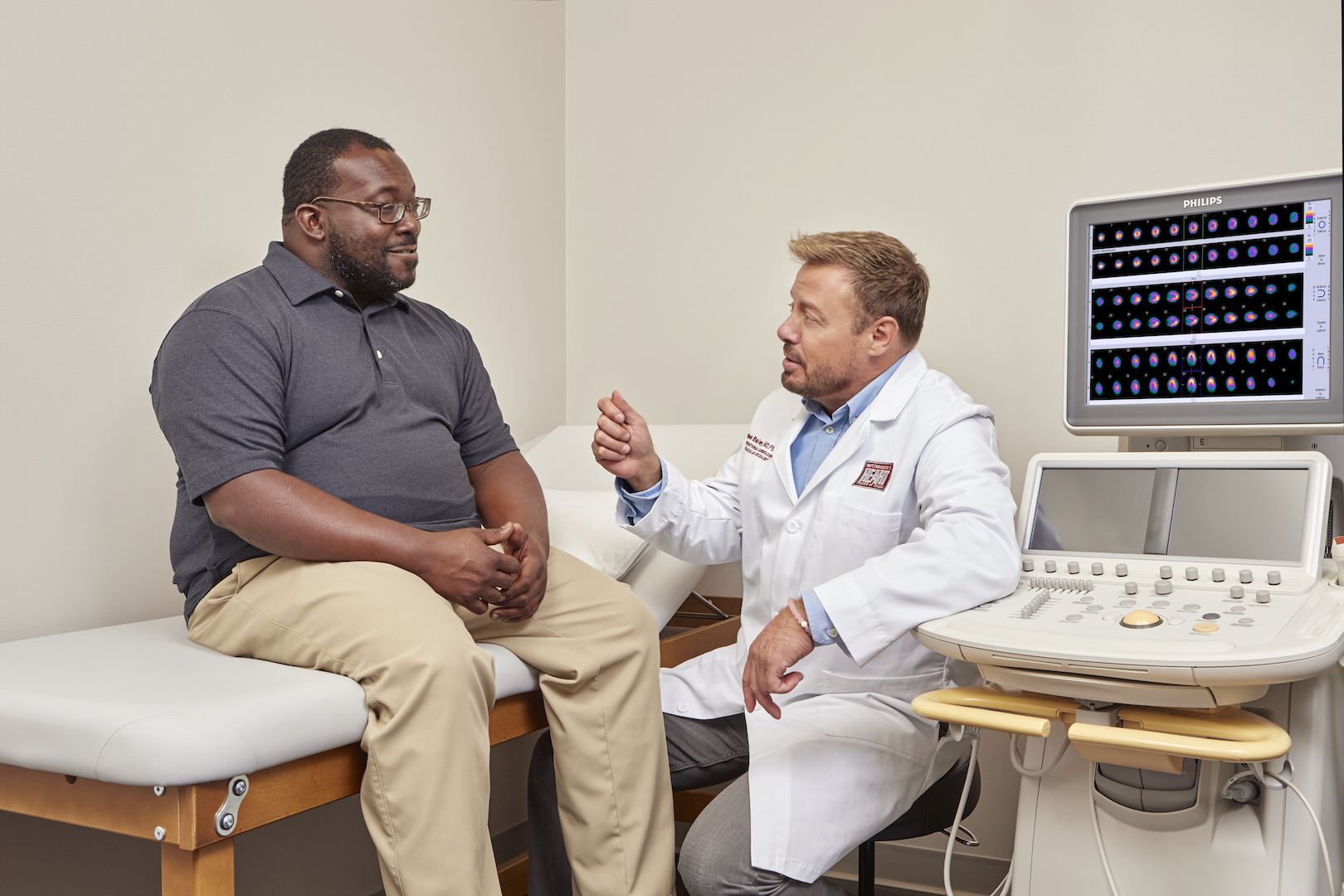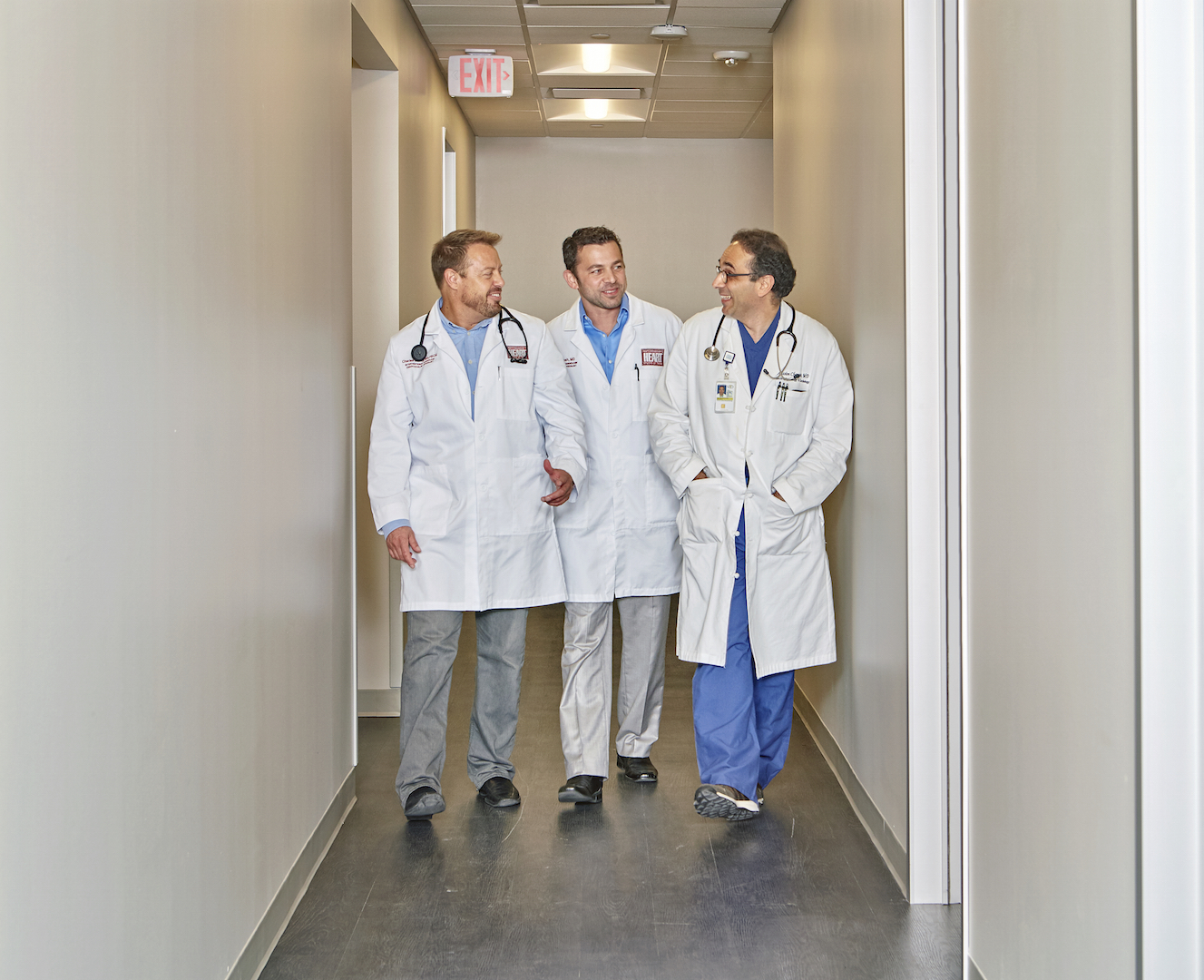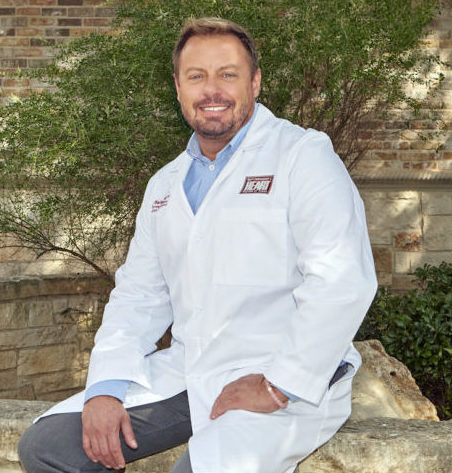- [dropcap size=small]D[/dropcap]r. Charles Bailey is changing the face of medicine and cardiovascular care with his new group Heart Endovascular and Rhythm of Texas.
Born in Seville, Spain, the young Charles Bailey likely had little idea that he would one day be on the forefront of altering the face of medicine and cardiovascular care as we know it. Yet those who effect change rarely ever know that their future endeavors will make such a drastic impact on groups of people, and Dr. Charles Bailey is no different.
Naturally, Dr. Bailey enjoyed his time in medical school and really had a genuine interest in all the educational experiences and situations he was exposed to. A graduate, with honors, of the University of North Carolina’s medical school, he opted to study internal medicine because it allowed the most options for the future possibility of pursuing a sub-specialty. Following his graduation, Dr. Bailey intended to pursue becoming a nephrologist through the University of Colorado’s renowned nephrology program. Unfortunately, fate had a different plan in mind. Unexpectedly, his father suffered a heart attack and he had to fly back to care for him. While his father underwent medical treatment, Dr. Bailey dutifully stayed by his side, and the experience changed the course of his life.
“I remember, even though I was a physician, I was shaken up because it was my dad. The cardiologist pulled me aside and went over the films with me. I was a physician, so I knew all the medical terms, and I knew the anatomy, but I still only retained 10 to 20 percent of what he said, and that struck me,” Dr. Bailey shared. “I needed to remember that when taking care of patients.”
The experience intrigued him because of the multi-faceted nature of cardiology. As Dr. Bailey saw, cardiologists had to be able to take care of patients for the long-term, handling their general primary care, while also being able to do hands-on work and procedures to help fix patients’ maladies.
“The cardiologist pulled me aside and went over the films with me. I knew all the medical terms, I knew the anatomy, I was a physician, but I still only retained 10 to 20 percent of what he said, and that struck me” -Dr. Charles Bailey
 Soon after, Dr. Bailey went home and destroyed his already completed applications for the nephrology program. Instead, Dr. Bailey decided to continue his training, and after his three years of residency, he taught for a year as chief resident.
Soon after, Dr. Bailey went home and destroyed his already completed applications for the nephrology program. Instead, Dr. Bailey decided to continue his training, and after his three years of residency, he taught for a year as chief resident.
Throughout his years, Dr. Bailey has truly done it all. He worked in EMS before attending medical school, and he practiced sports medicine at Arizona State University and at the University of North Carolina-Chapel Hill. Coupled with this, he spent a year in Greenville, South Carolina as a hospitalist.
“I’ve seen patients everywhere, from the streets to the emergency room, practiced internal medicine in the clinic, and utilized my subspecialty for patients coming in with heart attacks,” Dr. Bailey said with a nod.
Working in a variety of medical fields, Dr. Bailey witnessed the disjointed nature of care that patients sometimes experienced and that physicians had to suffer through because of previous decisions made at a stressful time.
“I really learned early on that until you walk in another person’s shoes you can’t know what they had to deal with and why they decided what they did. I realized that’s part of the problem in dealing with patients who have had previous medical care,” Dr. Bailey explained.
Seeing this, Dr. Bailey started working to organize continuity of care between different departments and physicians. By doing this, he was able to show the various roles of each department to fellow physicians and emphasize that their similarities in treating the patient were more pronounced than the differences. This is a concept that Dr. Bailey has brought to every hospital he has worked or trained at. Hospitals across the nation have benefited from Dr. Bailey’s efforts to establish cohesive continuity between medical departments and practitioners. From North and South Carolina to Wisconsin, Arizona, Pittsburgh, Pennsylvania and ultimately Texas, the effects of Dr. Bailey’s vision have followed him from coast to coast. Texas is Dr. Bailey’s newest choice as the perfect place to build on his vision for a number of reasons.
In truth, Dr. Bailey had always wanted to relocate to San Antonio, Texas. The large Spanish population and culture was a huge draw because of his own childhood in Seville, Spain, as was the opportunity for his mother, a Spaniard, to be in a Hispanic community. With the innately family-oriented and comforting aspects of Hispanic culture, he knew that his own family would be warmly welcomed in San Antonio.
“Who wouldn’t want to be sick and be surrounded by 30 family members who are going to help care for you? I thought ‘That’s a culture I want to be a part of,’” Dr. Bailey laughed as he gestured with open arms.
Dr. Bailed explained that another very important factor in his choice to move to San Antonio is the large military presence here. Dr. Bailey’s father was a retired military officer and the atmosphere of discipline and respect that the military nurtures has always been very dear to him. These values and disciplines that are part of this community’s military presence are comforting factors that have made this large metro area feel quaint and friendly to him.
“I have the best of both worlds,” mused Dr. Bailey. “This is a large city with a small town environment and great culture.”
“I really learned early on that until you walk in another person’s shoes you can’t know what they had to deal with and decide. I realized that’s part of the problem, that’s not part of the the solution” -Dr. Charles Bailey
In Texas, Dr. Bailey initially started out in New Braunfels. When he first arrived, the area hospitals were still using thrombolytics, a blood clot-busting medicine, to treat heart attacks. His first order of business was to halt the use of thrombolytics due to the immensely superior medical resources of nearby San Antonio. At the same time, Dr. Bailey sought to build the first interventional cardiology program in New Braunfels, ultimately performing the first coronary intervention done there–placing a stent in a coronary artery. Not long after establishing his interventional program, his lab quickly became one of the busiest in the area.
Coupled with this, Dr. Bailey and colleague Dr. Marc Gitterle created the first Center for Peripheral Vascular Excellence in order to stem the tide of patients losing their legs to amputation. The center was the first in the CHRISTUS Health system. Naturally, people in the CHRISTUS system wondered why the doctors in the small New Braunfels satellite were so eager to start the center, though after its establishment the number of patients being treated was an answer in itself.
“He [Marc] truly deserves all the praise and greatest amount of credit for that, in fulfilling his vision,” Dr. Bailey shared enthusiastically.
 Dr. Bailey decided to leave CHRISTUS, seeking to establish a change in the face of medicine with his burgeoning practice, Heart Endovascular and Rhythm of Texas (HEART). He sought to incorporate the small business practices of familiarity and relationships into medicine. Rather than embrace the corporate business of medicine, Dr. Bailey was seeking to create a corporate-cooperation model between medical facilities that would allow for joint ventures between physicians and hospitals. “In doing this, we can make sure the physician is a true advocate for his patients,” said Dr. Bailey.
Dr. Bailey decided to leave CHRISTUS, seeking to establish a change in the face of medicine with his burgeoning practice, Heart Endovascular and Rhythm of Texas (HEART). He sought to incorporate the small business practices of familiarity and relationships into medicine. Rather than embrace the corporate business of medicine, Dr. Bailey was seeking to create a corporate-cooperation model between medical facilities that would allow for joint ventures between physicians and hospitals. “In doing this, we can make sure the physician is a true advocate for his patients,” said Dr. Bailey.
Dr. Bailey’s practice, HEART PA, is based on the belief that the sum is greater than the total individual parts. A mainstay of his practice is the opportunity for patients to have a relationship with their individual physician while at the same time having the guarantee that any of the physicians in the group are able to perform the exact type and level of care for all patients who are a part of HEART PA. The patients can therefore rest assured that there is a continuity of care between their physicians.
“Who wouldn’t want to be sick and be surrounded by 30 family members that are going to help care for you? I thought ‘That’s a culture I want to be a part of’” -Dr. Charles Bailey
“At HEART PA, the patient is the center, not the physician. Our physicians are spokes on the wheel of care for our patients,” Dr. Bailey explained.“The patients are the hub.”
While being able to guarantee a continuity of care, Dr. Bailey and his fellow physicians, including Dr. Feras El-Bash and Dr. Wassim Choucair, offer patients an array of cardiovascular services that truly cover the complete spectrum of care.
As an electrophysiologist who is also board certified in internal medicine, Dr. Wassim Choucair specializes in helping heal the electrical abnormalities of patients’ hearts, using methods such as providing pacemakers, defibrillators or any of the other latest advancements in ablative techniques to treat heart rhythm disturbances.
His associate, Dr. Feras El-Bash, specializes in interventional and endovascular care. Board certified in internal medicine, cardiovascular disease, interventional cardiology, echocardiography, nuclear cardiology, and endovascular medicine, Dr. El-Bash, like his HEART colleagues, is among the top tier of cardiovascular health providers in the region.
“At HEART PA, the patient is the center, not the physician” -Dr. Charles Bailey
Their varied specialties and expertise allow Dr. Bailey and the HEART physicians to offer the full spectrum of diagnostic cardiac and peripheral testing. These physicians, in the over 10,000-square-foot facility, will be able to offer patients all the contemporary diagnostic testing available while also being able to perform same-day interventional procedures.
“We will be able to repair your heart arteries and send you home on the same day, and probably within three hours. You name it, we can do it—and do it well and quickly,” Dr. Bailey said with a cheerful grin.
This practice, much like its personnel, will be well-rounded in the services provided. From the complexities of electrophysiology and same-day interventional procedures to the daily care of patients’ cholesterol levels and hypertension, HEART PA will be able to offer patients all levels of care. Offering the full gamut of cardiac specialization, with available diagnostic testing, and conveniently located across the street from Methodist Stone Oak’s state-of-the-art facility, HEART PA has set the scene to change the face of medicine as we know it.
Under the guidance of Drs. Charles Bailey, Feras El-Bash and Wassim Choucair, the Alamo City will be blessed with the best in cardiovascular and endovascular care for years to come. Through his varied experiences and immense knowledge, Dr. Charles Bailey has successfully begun a revolution in the delivery of medicine, and yet, like so many of those on the forefront of change, he remains humble, and resolute in his mission to provide extraordinary care to those who need it.
For more information visit www.heartdoc.care or call 210.844.2393. Heart and Endovascular Rhythm of Texas is located at 1202 East Sonterra Boulevard, Suite 604 in San Antonio, TX 78258.





Recent Comments